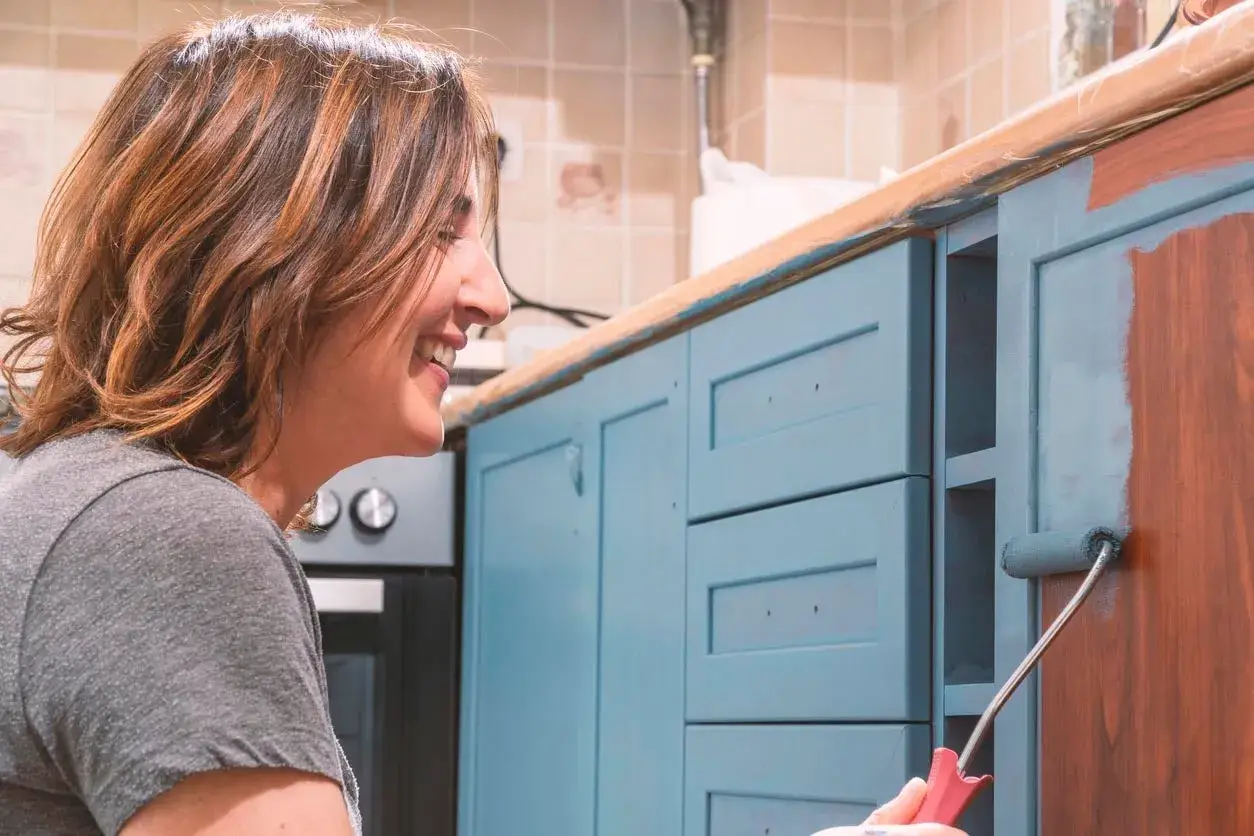Painting kitchen cabinets is a popular way to give your kitchen a fresh and modern look. But before you grab your paintbrush and start painting, there is one important step that you should not skip: sanding. Sanding is the process of removing the old finish and smoothing the surface of the wood, which prepares it for the new paint. Sanding also helps the paint adhere better and last longer. But what happens if you paint kitchen cabinets without sanding? Is it possible to skip this step and still get good results? The answer is: it depends on the condition of your cabinets and the type of paint you use.
Why Sanding Is Important
Sanding is not just a tedious and messy task that you have to do before painting. It has several benefits that can make a big difference in the quality and durability of your paint job. Here are some of the reasons why sanding is important:
- Sanding removes dirt, grease, and grime that can prevent the paint from sticking well to the surface. If you paint over these contaminants, the paint may peel, crack, or bubble over time.
- Sanding removes the glossy finish that most cabinets have, which can also interfere with the paint adhesion. A glossy surface is too smooth and slick for the paint to bond well, so you need to create some texture by sanding.
- Sanding evens out the surface of the wood, which can improve the appearance of the paint. If you have scratches, dents, or uneven areas on your cabinets, sanding can smooth them out and make them less noticeable.
- Sanding opens up the pores of the wood, which allows the paint to penetrate deeper and create a stronger bond. This can make the paint more resistant to chipping, scratching, and fading.
When You Can Skip Sanding
While sanding is generally recommended before painting kitchen cabinets, there are some situations where you can skip this step and still get satisfactory results. Here are some of the factors that can determine whether you can paint kitchen cabinets without sanding:
- The condition of your cabinets. If your cabinets are in good shape, with no major damage, stains, or defects, you may be able to get away with not sanding them. However, if your cabinets are old, worn, or damaged, you should sand them to fix the issues and create a smooth surface for the paint.
- The type of paint you use. Some paints are specially formulated to adhere well to glossy surfaces without sanding. These paints usually have a primer built-in, which creates a strong bond with the surface. Some examples of these paints are chalk paint, milk paint, mineral paint, and acrylic paint. However, if you use a regular latex or oil-based paint, you will need to sand your cabinets first to ensure proper adhesion.
- The finish you want. If you want a smooth and flawless finish, you should sand your cabinets before painting. Sanding will help you achieve a more even and professional-looking result. However, if you want a more rustic and distressed look, you can skip sanding and let the imperfections show through the paint.
How to Paint Kitchen Cabinets Without Sanding
If you decide to paint your kitchen cabinets without sanding, you should follow these steps to ensure a successful outcome:
- Clean your cabinets thoroughly with a degreaser or a mild soap and water. This will remove any dirt, grease, and grime that can affect the paint quality. Rinse well and let them dry completely.
- Choose a paint that is suitable for painting without sanding. Look for paints that have a primer built-in or that are designed to adhere to glossy surfaces. You can also use a bonding primer as a base coat before applying your paint of choice.
- Apply the paint with a brush, roller, or sprayer, following the manufacturer’s instructions. Use thin and even coats, and let each coat dry before applying the next one. You may need two or three coats to achieve full coverage and opacity.
- Apply a topcoat or a sealer to protect your paint and add some shine. You can use a clear wax, a polyurethane, or a polycrylic, depending on the type of paint you used and the finish you want. Follow the manufacturer’s instructions and let the topcoat dry completely before using your cabinets.
Conclusion
Painting kitchen cabinets without sanding is possible, but it depends on the condition of your cabinets and the type of paint you use. Sanding is an important step that can improve the quality and durability of your paint job, but it can also be skipped if you have good cabinets and use a suitable paint. However, you should always clean your cabinets well and apply a primer or a topcoat to ensure a good adhesion and protection. By following these tips, you can give your kitchen cabinets a new look without sanding.

